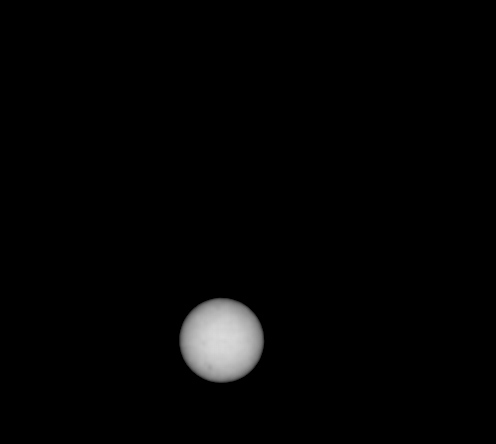Spherical panoramas of Mars and Curiosity
Russian photographer Andrei Bodrov creates 360-degree spherical panoramas based on Curiosity photos. His skill and complexity of such work is recognized even by NASA. On February 22nd, his panorama became the Astronomy Picture of the Day .

In this picture, the author combined two panoramas of two cameras MastCam Left and MAHLI. This panorama in February struck even the Americans and went through almost all the "space" sites.
( Unfortunately, the build did not work out so the screens are clickable )

')
Today's 4-gigapixel panorama is much more complicated; here the author had to combine shots from four cameras: three color MastCam Right, MastCam Left, MAHLI and one black and white NavCam. Frames were taken from 136–149 sol, when there were Christmas holidays on Earth and Curiosity had time to make panoramas. Now at Curiosity 229 sol.

I had thoughts to do something similar, but I didn’t do it, because it is really very difficult (besides the fact that a powerful technique is needed). But the implementation is excellent. And the combination of three different cameras, with different focal lengths, taken from three different angles in the Curiosity portrait, is generally beyond praise.
In both panoramas, most of the sky and the sun are artificial. Curiosity removes the sun only through a “welding mask”.

( Attempts to find sunspots on this photo were not successful )
The author took the color captured by the cameras when they filmed the horizon as the basis for the color of the sky. In reality, the sky should darken to the zenith. The better the weather, the less dust in the atmosphere and the blacker the sky.
Here is a palette from “Viking” where it is clearly visible (1742 - dust storm):

I foresee the traditional question: "How did he shoot himself?"
The answer is given by NASA for a long time. So:

In this picture, the author combined two panoramas of two cameras MastCam Left and MAHLI. This panorama in February struck even the Americans and went through almost all the "space" sites.
( Unfortunately, the build did not work out so the screens are clickable )

')
Today's 4-gigapixel panorama is much more complicated; here the author had to combine shots from four cameras: three color MastCam Right, MastCam Left, MAHLI and one black and white NavCam. Frames were taken from 136–149 sol, when there were Christmas holidays on Earth and Curiosity had time to make panoramas. Now at Curiosity 229 sol.

I had thoughts to do something similar, but I didn’t do it, because it is really very difficult (besides the fact that a powerful technique is needed). But the implementation is excellent. And the combination of three different cameras, with different focal lengths, taken from three different angles in the Curiosity portrait, is generally beyond praise.
In both panoramas, most of the sky and the sun are artificial. Curiosity removes the sun only through a “welding mask”.

( Attempts to find sunspots on this photo were not successful )
The author took the color captured by the cameras when they filmed the horizon as the basis for the color of the sky. In reality, the sky should darken to the zenith. The better the weather, the less dust in the atmosphere and the blacker the sky.
Here is a palette from “Viking” where it is clearly visible (1742 - dust storm):

I foresee the traditional question: "How did he shoot himself?"
The answer is given by NASA for a long time. So:
Source: https://habr.com/ru/post/174627/
All Articles